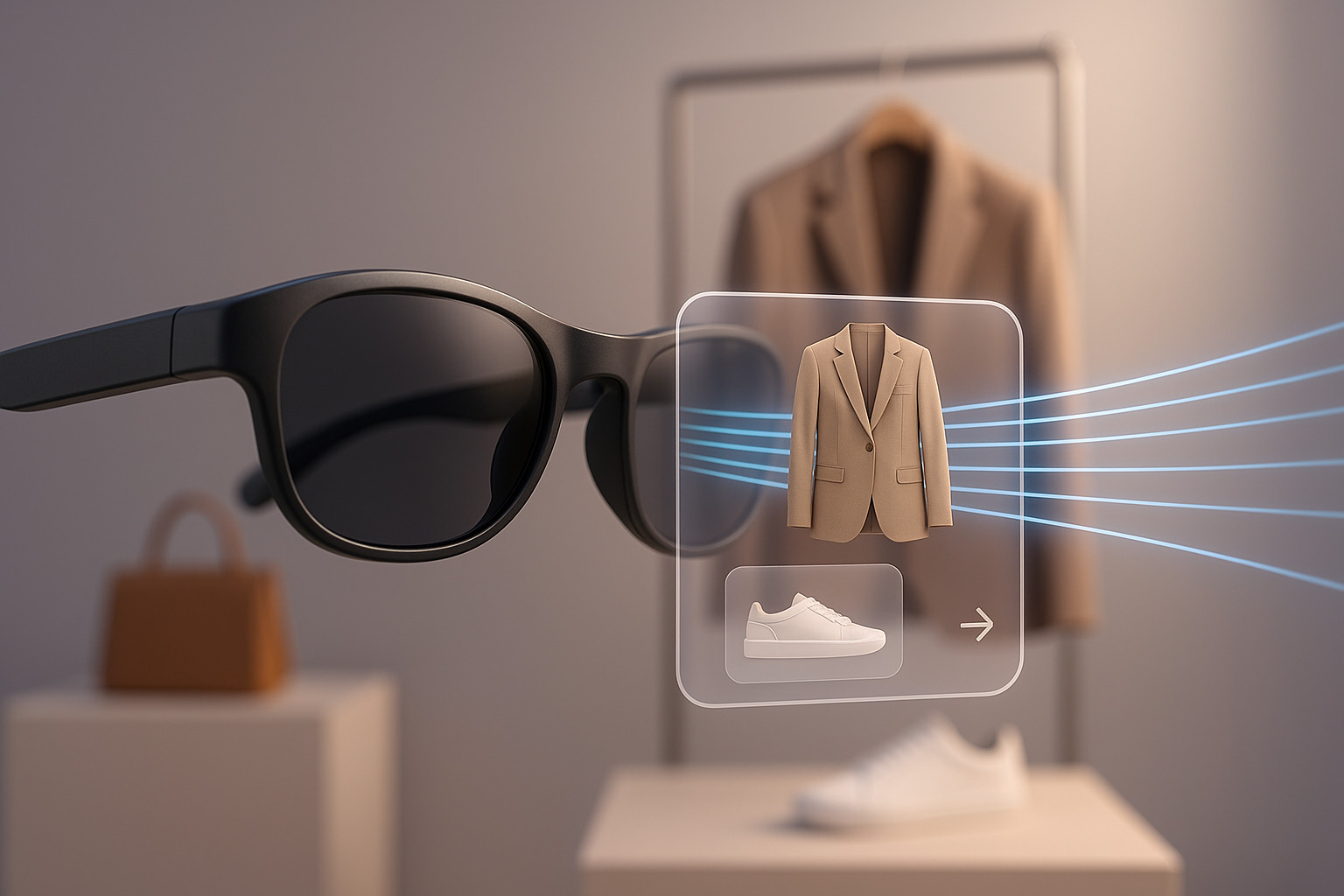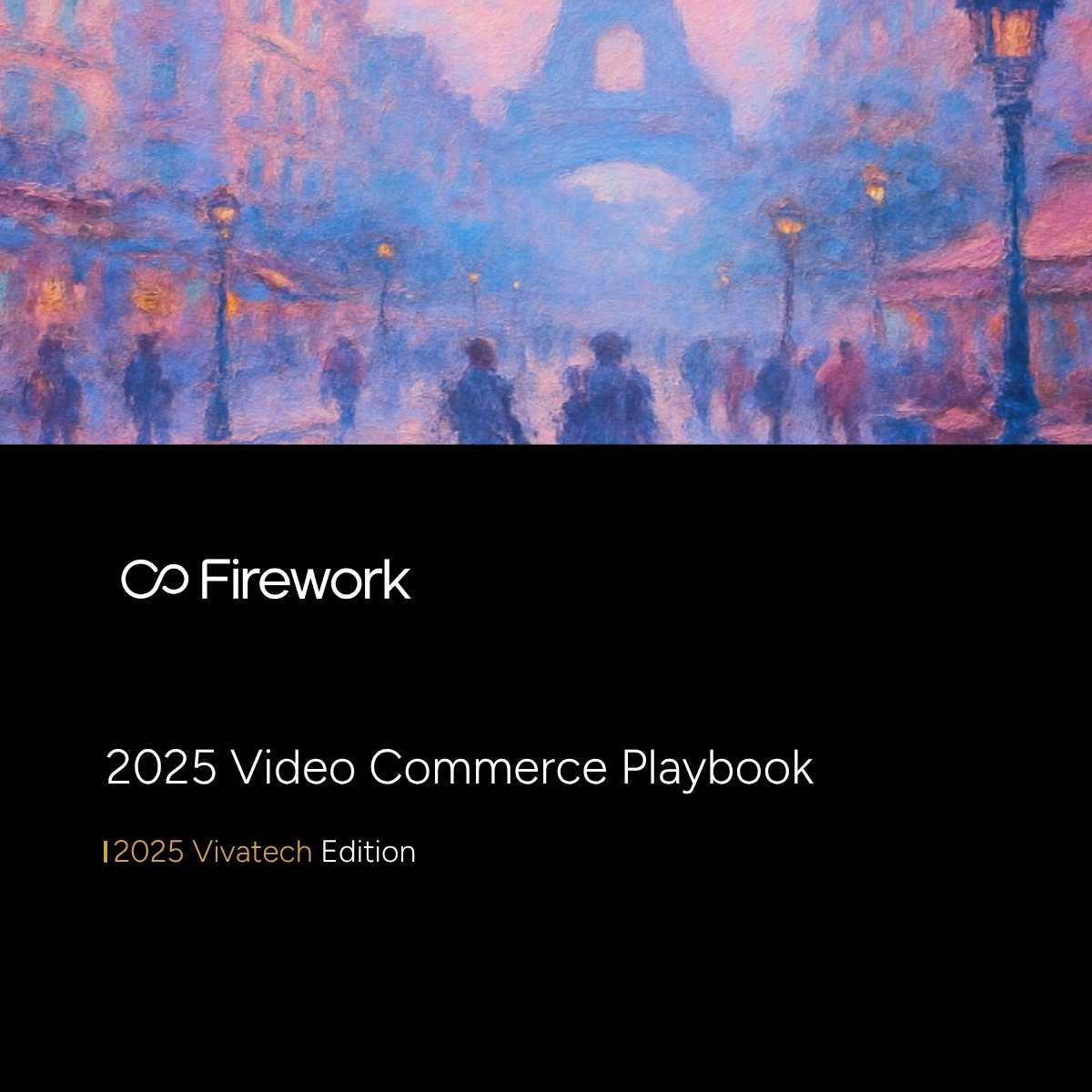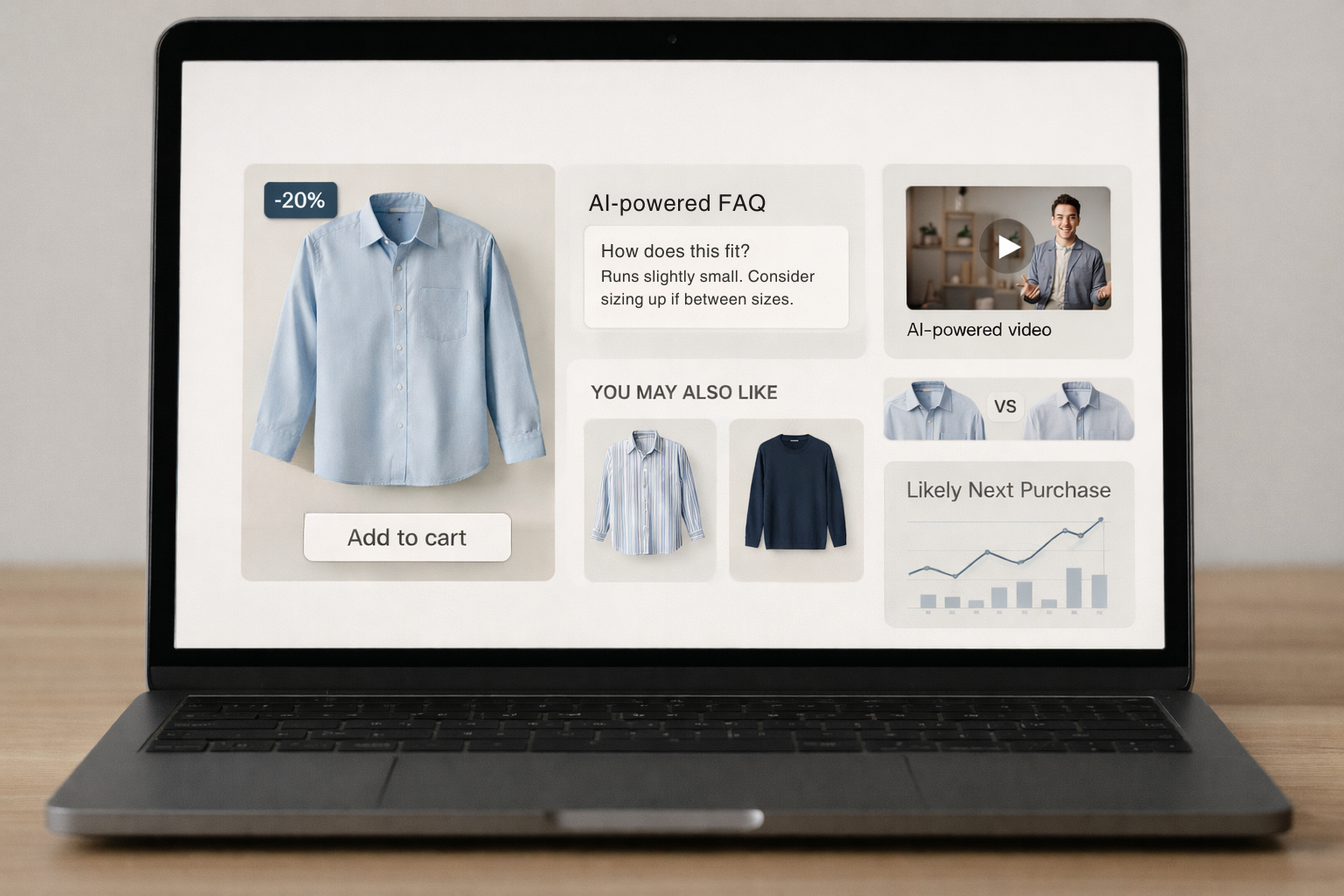Personalization is what separates the brands that get ignored from the ones customers return to. But with endless data and countless touchpoints, manual customization simply can’t keep up. That’s where AI comes in.
Used well, AI takes the guesswork out of content strategy. It can predict what your audience wants to see, when they want to see it, and how to deliver it in a way that feels personal, without being creepy or generic. From tailored product recommendations to sentiment analysis and virtual try-on experiences, smart personalization can turn casual visitors into loyal customers.
In this article, we break down five content personalization approaches that actually work, backed by strong use cases and practical impact.
1. Personalized Product Recommendation Engines
Smart recommendation engines fight choice overload, showing shoppers items they'll likely love while they're ready to buy. Systems blend collaborative filtering (patterns among similar shoppers), content-based filtering (matching product traits to interests), and deep-learning hybrids that improve with new data.
These methods rely on rich signals like browsing history, purchase behavior, demographics, and micro-interactions such as hover time. When applied effectively, they lead to stronger engagement, higher conversions, and more relevant customer experiences that directly impact business performance.
Platform choice depends on your needs: Dynamic Yield and Bloomreach work for enterprises, while Algolia offers simpler implementation for growing brands. ASOS proves this works with algorithmic styling selections that prevent overwhelm.
Implementation: Start simple with a "bestsellers for you" carousel, then add AI as traffic grows. Recommendations work best with compelling content, and interactive videos provide signals that make future suggestions more accurate.
2. AI-Powered Conversational Interfaces & Chatbots
Modern NLP-driven chatbots handle 60–70% of routine questions independently, delivering perfect answers 24/7. 80% of executives report demonstrable improvements in customer satisfaction, service delivery, and overall contact center performance as a result of implementing conversational AI chatbots.
Bloomreach's Loomi AI assistant and other modern conversational AI solutions demonstrate real-time personalization that keeps shoppers engaged. This system combines intent recognition, entity extraction, sentiment analysis, and retrieval-augmented generation to create natural, effective interactions.
Live-agent chats can be expensive to maintain, especially at scale. Automated chatbots offer a more cost-effective alternative, handling similar interactions efficiently while significantly reducing support overhead.
Implementation: Start with a basic FAQ bot, then add personalized suggestions, and eventually full conversational commerce. Advanced platforms can integrate shoppable video, creating seamless shopping experiences within the chat interface.
3. Dynamic Content Personalization for Marketing & Promotions
Dynamic content personalization creates seamless experiences by showing visitors exactly what interests them across devices. This works through customer data platforms like Iterable or Braze that continuously update user profiles with every interaction.
Decision engines instantly evaluate each visitor's status and display relevant content, while machine-learning models analyze historical and real-time signals to predict what will resonate.
The power multiplies when connecting channels, abandoned carts trigger emails, location-based texts, and personalized homepages, with customized email subject lines alone boosting open rates by roughly 26%.
Implementation: Start small with one personalized element, add triggers like inventory alerts, and measure weekly results before expanding. When combined with interactive video platforms that capture engagement signals in real-time, these systems create custom experiences that transform passive viewing into active purchasing.

Smart glasses display a curated outfit selection, featuring a tan blazer and white sneakers, in a modern retail setting.
4. Augmented Reality & Virtual Try-On Experiences
AR transforms shopping anxiety into confidence by showing how products look in real life. Shoppers point their phones to see lipstick on their lips or furniture in their homes, addressing key concerns: fit, match, and appearance.
The technology combines facial detection, physics-based rendering, spatial mapping, and 3D modeling through platforms like ARKit and ARCore. Browser-based WebAR solutions like 8th Wall eliminate app downloads.
Implementation: Focus on visually critical categories (makeup, eyewear, furniture) with quality 3D assets. Options range from simple site integrations to enterprise platforms with real-time analytics. Combined with video commerce, AR creates seamless experiences where shoppers can try and buy without leaving the screen.
5. Sentiment Analysis & Feedback-Driven Personalization
Levi Strauss exemplifies sentiment analysis in action. By processing thousands of reviews, they identified sizing issues with their skinny jeans and adjusted inventory before the holiday season, preventing overstock and prioritizing popular styles.
This technology uses natural language processing to extract emotion, intent, and topics from unstructured text. Machine learning scores phrases while topic modeling groups insights like "fabric quality" or "shipping delays" from reviews, social posts, and customer service interactions.
Benefits extend across organizations: customer service prioritizes urgent issues, product teams address defects early, and marketers adjust messaging based on social media sentiment.
Implementation: Start with cloud APIs for automatic sentiment detection, followed by custom models tailored to brand language. Video commerce platforms enhance this through engagement metrics, polls, and reaction data, although real-time video feedback analysis remains emerging and resulting in you co-creating with them in real-time.
How Privacy Builds Better Personalization
Every personalization tactic fails without customer trust. 87% of consumers say they won't do business with a company if they have concerns about its security practices, while 55% of consumers globally have decided against making an online purchase due to privacy concerns. Privacy-first personalization in Marketing Wins Customer Trust.
Here's how to build the privacy foundation that makes personalization actually work:
- Use progressive profiling instead of invisible tracking: Collect preferences through interactive quizzes, polls, and surveys rather than sneaky data collection. Sephora's Beauty Insider program drives 80% of the company's sales with over 25 million members because customers willingly share skin concerns and color preferences for genuinely useful recommendations.
- Focus on zero-party data collection: When customers actively share their needs, recommendation engines become more accurate, chatbots provide better support, and dynamic content resonates instead of feeling creepy. 89% of respondents ages 18-29 consider personalized experiences important, and 68% are comfortable sharing personal information when they see clear value.
- Create clear value exchanges. Ask for a birthday in exchange for special offers, request style preferences for better recommendations, or gather feedback for product improvements. 48% of customers are comfortable sharing personal data when it leads to better experiences, so make the benefits obvious and immediate.
- Implement preference centers with customer control. Let customers manage their data, update preferences, and see immediate benefits from sharing information. This transparency builds the trust foundation that makes all five personalization techniques dramatically more effective.
A Roadmap for Founders & CMOs
You've seen the impact; smart recommendations boost sales while chatbots reduce costs. Follow this streamlined approach to maximize ROI:
- Implement basic chatbots for common inquiries and simple recommendation widgets to improve relevance while building your data foundation.
- Unify customer data into complete profiles and deploy real-time personalization across digital touchpoints, tracking everything to connect growth with specific tactics.
- Roll out immersive AR experiences and sentiment-driven campaigns using your established data core, creating increasingly intelligent personalization.
Measure performance at each stage to demonstrate ROI. If you intend to make your content work harder, try Firework. Firework’s AI-powered video commerce transforms the customer journey with always-on video experiences that drive real action, turning every click into momentum and every moment into growth. Book a Firework demo today!
Unlock Exclusive Insights
By submitting this form, you agree to Firework's privacy policy and consent to receive personalized marketing communications. You can unsubscribe at any time.




























